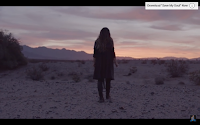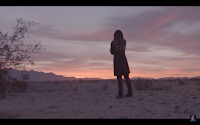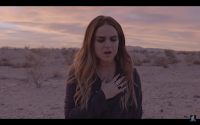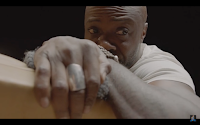Wednesday, 28 September 2016
Friday, 23 September 2016
Final Song Choice and Artist Name
After much deliberation we final chose our song choice for our music video: Gasoline by Halsey.
As well as this we also came up with our artist name and who would perform the song.
Our artist name is Ivory
As well as this we also came up with our artist name and who would perform the song.
Our artist name is Ivory
Lip Sync Task
In order to help us decide on a song, every member of our group had to lip sync one of the songs that we chose.
The two songs we finalised were:
In order to decide who would sing the Halsey song, both Tilly and I lip synced the first minute or so of the song, here is our lip sync:
To help decide who would sing the song by Rise Against, both Jack and Connor lip synced the song, here is there lip sync to Everchanging:
The two songs we finalised were:
- Gasoline by Halsey
- Everchanging (Acoustic) by Rise Against
In order to decide who would sing the Halsey song, both Tilly and I lip synced the first minute or so of the song, here is our lip sync:
To help decide who would sing the song by Rise Against, both Jack and Connor lip synced the song, here is there lip sync to Everchanging:
Thursday, 22 September 2016
Song Suggestion Feedback
Here is the class feedback we received on our final three song choices: Gasoline by Halsey, Everchanging (Acoustic) by RiseAgainst and Candy by Doja Cat.
Possible Song Ideas
For the last two weeks each member of our group had to go away and find a couple possible song choices for our music video. We were then asked to finalise our own choices and present to the group and then to the whole class.
These were our final three song choices which we then had to present, along with our ideas to the class and note down their feedback.
Halsey- Gasoline
Lauv- The Other
Rise Against- Everchanging (Acoustic)
These were our final three song choices which we then had to present, along with our ideas to the class and note down their feedback.
Halsey- Gasoline
Lauv- The Other
Rise Against- Everchanging (Acoustic)
Wednesday, 21 September 2016
30 Second Breakdown
JoJo- Save My Soul

0-4 seconds: The opening shot of this music video sees the artist, JoJo, facing away from the camera in a wide angle shot. The setting is visually stunning, depicting a desert-like surrounding as the sun begins to set.
As the shot develops JoJo is seen walking slowly away whilst the camera moves with her. The music starts as JoJo takes her first step and continues throughout.
5-10 seconds: For 5 seconds the camera focuses on a single, vintage yellow couch surrounded by sand/dust. This is such a simple shot that feels out of place in the beginning but after watching the entire music video, it helps to set the location and the scene for half of the shots we see.
11-15 seconds: This is the first time we see the artist, JoJo, facing the camera. This medium shot comes as the the lyrics begin and JoJo can be seen singing to the camera. The camera shot is stationary and focuses on the artist singing in this reoccurring location.
16-18 seconds: The artist starts facing side on to the camera before turning and singing the line "Don't know where your heart is" towards the camera. This shot only lasts the length of this one line before changing to a wide shot of the yellow couch.
Unlike the previous shot, the camera moves with JoJo, tracking her before she slows to sing the line directly to the camera.
19-22 seconds: At this point in the music video we see another person begin to feature. This wide angle shot of a man sitting on the yellow couch is the first instance we get that this music video could be more than just performance and could possibly be a combination of performance and narrative.
The man we see looks conflicted and upset which perfectly matches the lyric it is the visual of, "but mine's bruised."
23-24 seconds: This close up shot of the man we had seen previously sets the tone for the music video as being an insightful look into the emotions and lives of couples and single people. The camera pans down without breaking the audience's eye contact with the man as the song plays in the background.
 25-26 seconds: Similar to the opening shot, we see JoJo facing away from the camera as the camera pans down to the floor. The shot only lasts one second and at the end of the shot, we see JoJo briefly turn her head towards the camera.
25-26 seconds: Similar to the opening shot, we see JoJo facing away from the camera as the camera pans down to the floor. The shot only lasts one second and at the end of the shot, we see JoJo briefly turn her head towards the camera.
 27-29 seconds: For two seconds we see a medium close up shot of JoJo singing to the camera. The camera can be seen slowly circling JoJo, focusing on her heartbroken expression as she sings the line "blood on the carpet". Throughout this shot JoJo never looks directly at the camera and keeps her hand placed on her chest.
27-29 seconds: For two seconds we see a medium close up shot of JoJo singing to the camera. The camera can be seen slowly circling JoJo, focusing on her heartbroken expression as she sings the line "blood on the carpet". Throughout this shot JoJo never looks directly at the camera and keeps her hand placed on her chest.
 30-31 seconds: The second person that features in the music video so far, is seen again in this close up shot on the yellow couch. We begin to see what the music video is really about within this shot as tears can be seen streaming down the man's heartbroken face. This image, plus the other insightful shots of JoJo facing away from the camera and looking down, suggest that this music video is going to feature parallel visuals to the lyrics of the song "Save my Soul".
30-31 seconds: The second person that features in the music video so far, is seen again in this close up shot on the yellow couch. We begin to see what the music video is really about within this shot as tears can be seen streaming down the man's heartbroken face. This image, plus the other insightful shots of JoJo facing away from the camera and looking down, suggest that this music video is going to feature parallel visuals to the lyrics of the song "Save my Soul".

0-4 seconds: The opening shot of this music video sees the artist, JoJo, facing away from the camera in a wide angle shot. The setting is visually stunning, depicting a desert-like surrounding as the sun begins to set.
As the shot develops JoJo is seen walking slowly away whilst the camera moves with her. The music starts as JoJo takes her first step and continues throughout.
5-10 seconds: For 5 seconds the camera focuses on a single, vintage yellow couch surrounded by sand/dust. This is such a simple shot that feels out of place in the beginning but after watching the entire music video, it helps to set the location and the scene for half of the shots we see.
11-15 seconds: This is the first time we see the artist, JoJo, facing the camera. This medium shot comes as the the lyrics begin and JoJo can be seen singing to the camera. The camera shot is stationary and focuses on the artist singing in this reoccurring location.
16-18 seconds: The artist starts facing side on to the camera before turning and singing the line "Don't know where your heart is" towards the camera. This shot only lasts the length of this one line before changing to a wide shot of the yellow couch.
Unlike the previous shot, the camera moves with JoJo, tracking her before she slows to sing the line directly to the camera.
19-22 seconds: At this point in the music video we see another person begin to feature. This wide angle shot of a man sitting on the yellow couch is the first instance we get that this music video could be more than just performance and could possibly be a combination of performance and narrative.
The man we see looks conflicted and upset which perfectly matches the lyric it is the visual of, "but mine's bruised."
23-24 seconds: This close up shot of the man we had seen previously sets the tone for the music video as being an insightful look into the emotions and lives of couples and single people. The camera pans down without breaking the audience's eye contact with the man as the song plays in the background.
 25-26 seconds: Similar to the opening shot, we see JoJo facing away from the camera as the camera pans down to the floor. The shot only lasts one second and at the end of the shot, we see JoJo briefly turn her head towards the camera.
25-26 seconds: Similar to the opening shot, we see JoJo facing away from the camera as the camera pans down to the floor. The shot only lasts one second and at the end of the shot, we see JoJo briefly turn her head towards the camera. 27-29 seconds: For two seconds we see a medium close up shot of JoJo singing to the camera. The camera can be seen slowly circling JoJo, focusing on her heartbroken expression as she sings the line "blood on the carpet". Throughout this shot JoJo never looks directly at the camera and keeps her hand placed on her chest.
27-29 seconds: For two seconds we see a medium close up shot of JoJo singing to the camera. The camera can be seen slowly circling JoJo, focusing on her heartbroken expression as she sings the line "blood on the carpet". Throughout this shot JoJo never looks directly at the camera and keeps her hand placed on her chest. 30-31 seconds: The second person that features in the music video so far, is seen again in this close up shot on the yellow couch. We begin to see what the music video is really about within this shot as tears can be seen streaming down the man's heartbroken face. This image, plus the other insightful shots of JoJo facing away from the camera and looking down, suggest that this music video is going to feature parallel visuals to the lyrics of the song "Save my Soul".
30-31 seconds: The second person that features in the music video so far, is seen again in this close up shot on the yellow couch. We begin to see what the music video is really about within this shot as tears can be seen streaming down the man's heartbroken face. This image, plus the other insightful shots of JoJo facing away from the camera and looking down, suggest that this music video is going to feature parallel visuals to the lyrics of the song "Save my Soul".
Tuesday, 20 September 2016
Monday, 19 September 2016
Friday, 16 September 2016
Banana Phone
For the last two weeks, our class has been working on a preliminary task which would test our ability to edit.
We were each given a group to work with and a set of tasks that we had to complete. These shots and task included: cloning, a tracking shot, a reverse shot, stop animation and a depth of field shot.
My group consisted of myself, Tilly Hawkins and Angel Duncil. As a group we worked very well together during the filming of our shots. Angel and Tilly took on the role of being in front of the camera where as I felt more comfortable behind the camera. We were able to get all of our shots done, to a very high standard which was comforting to know as we each had to edit our own version of 'Banana Phone' by the end of the next week and so wanted all of our shots to be just right.
Evaluation
What Went Well:
We worked very well as a group and got all of our shots done very quickly.
I was able to complete all of the editing tasks to a relatively high standard.
With time to spare I was even able to do other editing effects that were separate to the list we were given, showing my developing skills in editing. For example: the opening title shot took me quite a long time to do as it was difficult to layer the shots in order to make it work. However, after watching the tutorial several times and working for hours on it, I was finally able to have all eleven clips showing behind the letters of the title.
What Could Have Gone Better:
The footage that we filmed for the cloning effect could have been re shot if we had more time as, although we did not move the camera, the natural sunlight appears to change between two of the shots making it obvious that they are different which made the cloning nearly impossible to do professionally.
The stop animation shots could have been more focused which would have made the entire stop animation section more professional and more polished.
We were each given a group to work with and a set of tasks that we had to complete. These shots and task included: cloning, a tracking shot, a reverse shot, stop animation and a depth of field shot.
My group consisted of myself, Tilly Hawkins and Angel Duncil. As a group we worked very well together during the filming of our shots. Angel and Tilly took on the role of being in front of the camera where as I felt more comfortable behind the camera. We were able to get all of our shots done, to a very high standard which was comforting to know as we each had to edit our own version of 'Banana Phone' by the end of the next week and so wanted all of our shots to be just right.
Evaluation
What Went Well:
We worked very well as a group and got all of our shots done very quickly.
I was able to complete all of the editing tasks to a relatively high standard.
With time to spare I was even able to do other editing effects that were separate to the list we were given, showing my developing skills in editing. For example: the opening title shot took me quite a long time to do as it was difficult to layer the shots in order to make it work. However, after watching the tutorial several times and working for hours on it, I was finally able to have all eleven clips showing behind the letters of the title.
What Could Have Gone Better:
The footage that we filmed for the cloning effect could have been re shot if we had more time as, although we did not move the camera, the natural sunlight appears to change between two of the shots making it obvious that they are different which made the cloning nearly impossible to do professionally.
The stop animation shots could have been more focused which would have made the entire stop animation section more professional and more polished.
Tuesday, 6 September 2016
Student Videos Analysis
This is one of my favourite A Level music videos that I came across for a few different reasons. I personally love the song and thinks it's original and interesting and works very well with the visuals. Furthermore, the combination of performance and narrative compliments the song perfectly as the audience can not only engage with the performer but can relate and empathise with the storyline which is being conveyed through contemporary dance.
When looking at Carol Vernallis' and Andrew Goodwin's music video theory, it is clear that this video covers a lot of these key aspects for example: Andrew Goodwin's theory includes the idea of the star image which can be clearly displayed throughout this video as the camera and editing always returns to the performer who is isolated and alone thus reinforcing her importance. Similarly, the music video also demonstrates the importance and visual appeal of camera movement within music videos. During the shots of the dancers, the camera is moving constantly but still focuses on them and their movements. This is very powerful, and effective, as it keeps the audience interested and engaged, as a static camera angle can become stale and predictable.
Finally, the performance element of a music video is probably the most important as it can effectively make or break a successful music video. The performance throughout this music video is creative and convincing as the women singing, fits the profile of the artist who sings the song thus further convincing the audience that she is really singing.
This is another one of my favourite music videos because it's inventive and is a little more upbeat than some of the other, typical indie songs that are covered at A Level. This music video is mainly performance based and works very well with the song as the female performer in the video fits the stereotypical image of an indie girl thus further convincing the audience that they are a real group and this is a real music video.
The genre of the song, Indie Pop, is conveyed clearly and effectively throughout the video via the live performance element, the clothing and the camera work. Similarly the changing between black and white shots and colour shots makes the song and music video appear both retro and modern at the same time, thus making it interesting and exciting to watch.
However, patterns do begin to emerge after watching the video multiple times for example; during the verses, the shots are all in black in white but when the chorus begins, the shots change to colour which is very visible editing but as Carol Vernallis explores in her music video theory, the editing in a music video can be obvious and more noticeable than the editing used in film and can be modified to work with the music i.e. cutting to another shot when the chorus begins.
Subscribe to:
Comments (Atom)







